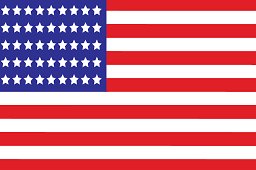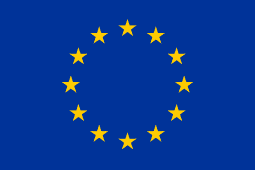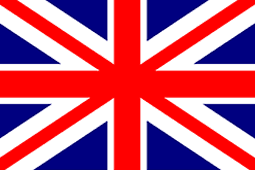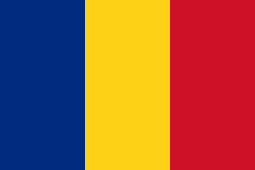News
Why Tie-Dye Can’t Die
READ TIME: 6 MINUTES

Although the techniques highlighted above can only be confirmed in writing at their earliest according to this timeline, it is likely people of these regions have been practicing versions of these techniques since their first arrival!
In America tie-dye has a strong association with the hippie and countercultures of the 60s and 70s. However, historically the tying and dyeing of fabric has not been relegated to any one group of people. Since the dawn of time, humanity has been cultivating materials to weave fabric and subsequently dyeing said fabric in a variety of intriguing ways with available materials and techniques.
The concept of creating patterns by blocking or tying off areas of fabric, preventing it from being saturated with dye, is evidenced in archaeological findings dating back as early as 4000 BC in the Indus River Valley Civilization. These findings reveal an ancestor of the modern Bandhani technique found commonly across the Indian subcontinent. The word Bandhani itself originates from the Sanskrit root “bandh”, meaning “to bind/to tie”.

This scarf was dyed using the Bandhani technique as shown not only by the patterning but by the fabric's puckered shape, leftover from the process.
Since these early instances of tie-dye, humanity has elaborated on the process to specify many patterns, techniques, and materials distinct to different cultures and regions. These include techniques that focus on applying substances to the fabric surface to prevent dyeing, like the Batik technique of Indonesia or forms of Adire practiced by the Yoruba people of Nigeria, which use hot wax and cassava paste respectively. Some techniques are incredibly involved, such as the Mudmee technique of Thailand which relies on tie-dyeing individual strands of fabric before weaving, so that when woven they create striking patterns.
Others, like certain Shibori techniques of Japan, more closely resemble the unpredictable patterns of tie-dye we’re accustomed to in America. Shibori has many different patterning techniques under its umbrella, often used in combination to make more elaborate designs. It is most commonly recognized by its brilliant cream and indigo contrasting color combination with an emphasis on natural materials, although in the modern era Shibori techniques are used with a range of colors, fabrics, and dye types including synthetics.
Not only has the process been nearly ubiquitous throughout history, but the materials as well. Members of the Indigofera family of plants have been used to create indigo dye for millennia all around the world, with the earliest examples of indigo dyed fabric being found 6,000 years ago in Peru. Indigo hues are still seen in traditionally tie-dyed fabrics, particularly in the intricate designs of Adire variations and the aforementioned Shibori. In America Indigo is a popular choice for monochromatic tie-dye, though much of commercially available indigo dye today is synthetic.

Image of someone dyeing fabric in an indigo dye pit in Okinawa, Japan sometime before 1946.
Tie-dye came to the United States around 1909 when Charles E. Pellow, Columbia University professor, obtained samples of tie-dyed muslin and spoke about them in public. Some tie-dye had been seen in American fashion before 1960, but it was the rock stars of the 1960s counterculture movement that kick-started tie-dye’s popularity in the United States.
Rockers like Janis Joplin and John Sebastian, who dyed his own shirts, contributed to tie-dye’s rise in popularity. Counterculture leader Ken Kesey and his associates claim to have invented the tie-dye look by pouring enamel-based paint into a pond and laying a white t-shirt on top of the water. The Merry Pranksters - Kesey’s followers - did this while on a road trip in the early 1960’s, but some say the technique they used is closer to paper-marbling.
Soon enough, tie-dyed souvenirs and clothing began to appear for sale at concerts and festivals. Much of this merchandise aimed to imitate intricate styles seen across Asia and Africa, but without knowledge of the specific techniques. Their painted “tie-dye” recreations can be seen in photos of events from this era, as well as experimentation with tying and folding to create patterns.

An original hippie era vintage tie-dye shirt incorporating organic splashes of color and intention color painted in a design on the front of the shirt. This gem was found in a now closed vintage shop in Harrisburg, PA by Collectors Weekly user HippieArchaeologist.
Although people across the world commonly dyed silk, hemp, and other fabrics with resist methods as early as the 6th Century, the colorful tie-dye look was a novelty in otherwise homogeneous mid-century America. The hippies of the 1960’s, looking to differentiate themselves from mainstream culture, picked up the style and ran with it. Very quickly it went from a novelty to a symbol of solidarity among the various facets of the countercultural movement.
Ironically, a major contributing factor to the rise of tie-dye in American culture was the Rit brand of dye. They were undergoing hard times in the Sixties and needed some fresh marketing ideas. Don Price, a marketing professional for Rit, decided to take his product to two artists in Greenwich Village. These retired artists were charged with creating a hip new product for the Rit fashion company. The rest is history!

This 1967 print ad for Rit dye advertises its tie-dye potential not just as an update for one's wardrobe, but as an interior decorating tool.
Despite its grassroots origins, it’s the commercialization of tie-dye that has catapulted it to current acclaim. The accessibility created by dye brands like Rit and Tulip has allowed anyone interested in experimenting with the technique to give it a go! Tie-dye has grown to be a recognizable part of American culture, appealing to audiences far beyond the hippie subculture. From group activities to a rainy day pastime while home alone, tie-dye has demonstrated staying power.
The style has also been seen trending in modern fashion, with tie-dye garments easily accessible in any Kohls, Target, Nordstrom, or other department stores as well as being offered by sellers across popular shopping sites like Etsy and Amazon. Ultra bright colorful hues are popular in children’s and streetwear with muted, monochromatic styles dominating high-end ready to wear and lounge sets.

A shibori style tie-dyed t-shirt at our local Target.
Tie-Dye retains its counter cultural significance, however. One popular example of the style’s contemporary resurgence is the practice of tie-dye being applied to the concept of upcycling. In an effort to ditch fast fashion, many have been scratching the itch of a new wardrobe by simply altering their existing pieces, or finding low cost alternatives to DIY. This is a great option for those who can’t afford to spend big bucks on high end pieces, or who may not want to contribute to an industry that ranks in the top 3 polluting industries, third only to agriculture and the fuel industry itself.
While more costly in terms of personal labor and time, in this new era many have more idle time and an urge to use their hands. Indeed, 2020 saw a surge in DIY trends in general. Plus, creating something yourself makes wearing it that much more exciting!
Although some may associate tie-dye with a loud, obnoxious, or unpolished look, rest assured there is a huge variety of tie-dye styles to choose from. Not every iteration need be a swirling rainbow, and there's thousands of years of tying and dyeing to take inspiration from. Tie-dye can be simple, artful, and tame while still commanding presence as a unique garment.
This cashmere trench coat from Gabriela Hearst tie-dyed in the "Michael" style is the perfect example of how consumers are willing to pay big bucks for garments they can guarantee are created sustainably and are at the forefront of trend. Considering the price of this piece clocks in at nearly $7,500, I don't think I'll be adding it to my bad weather wardrobe anytime soon!
Neutral colored, organic patterned tie-dye is trending in the loungewear scene, like this piece from Clare V. In fact, tie-dye is trending in a big way across all kinds of loungewear, with the matching sweat set seen on celebrities from Gigi Hadid, Justin Bieber, Jennifer Lopez, and many more. In celebrity circles colorful seems to be the go-to look, and many of their sets trend on the pricier side like this loud set from Diesel. Pricier still is the ultra high fashion, ultra planet-conscious stylings of Uruguay designer Gabriela Hearst, whose tie-dyed pieces sell for upwards of 3, 5, or even 7 thousand dollars! Hearst’s brand is one that revolves around the concept of sustainability, no doubt adding to the exorbitant costs of her one of a kind pieces.
For an extra dose of affordability and sustainability, we recommend thrifting pieces similar to those you’re looking for and using a simple tie-dye kit to recreate the look. Tie-dye kits can be purchased in a wide range of colors and dyes suitable for different fabrics.

Mato & Hash's first original one of one sweat set and matching accessories!
For our DIY sweat set venture we decided to emulate the simple striped design seen in monochrome on many sets, like this one from Wsly, but with a Mato & Hash rainbow twist! We’re using our MH200HOOD and jogger duo as the base. For an extra matchy flair, we decided to apply the same colors to a matching CA2725 white cotton cinch bag and a CA4200 white cotton bandana.
Personally I’m loving the look, and the process of creating it was exciting through every step! If you’re worried about tie-dye only being achievable on 100% cotton or natural fabrics, worry no more. Our hoodies and joggers are both cotton/polyester blends of varying mixtures according to color, and they turned out awesome! For tips on how to get perfect tie-dye on blended fabrics, check out this helpful overview from Our Pastimes.
Of course, if you’re concerned about time and effort, you could simply sport a printed graphic tee in the tie-dye style! Mato & Hash offers one in a psychedelic, other-worldly style. Innovative screen printers have found a way to emulate the style all over garments, as seen on trendy Target racks. Or, you could use our online designer to upload any tie-dye pattern you desire!

T-shirt design spotted at our local Target cleverly using screen printing techniques to imitate the appearance of tie dye without the cost or labor of dyeing pieces individually.
Speaking of the graphic tee, tie-dye is an excellent way to refresh tees that may otherwise be aging out of style. Additionally, it’s no issue at all that the most popular tee color choices are black and navy, as bleach tie-dye is just as popular and universal as tie-dye done with traditional dyes. That being said, don't be afraid to experiment with dyeing non traditional fabric colors like yellow, blue, and pink!
So, whether you’re ready to taste the rainbow, or prefer your style on the simple side, take a fashion lesson from the halls of history and see how tie-dye can impact your wardrobe. There’s truly a style for everyone!












